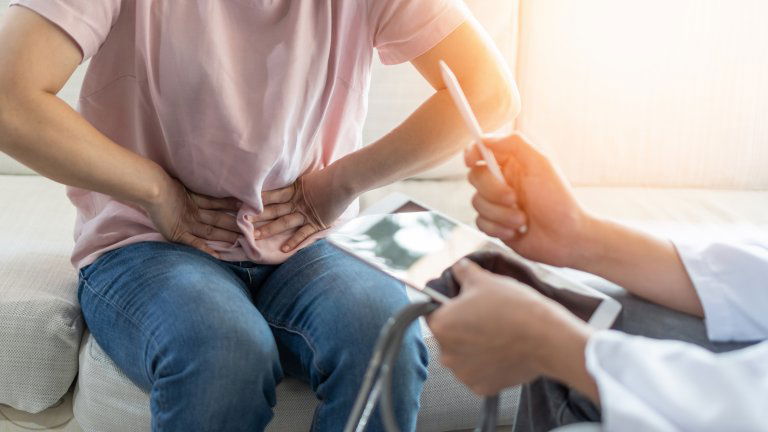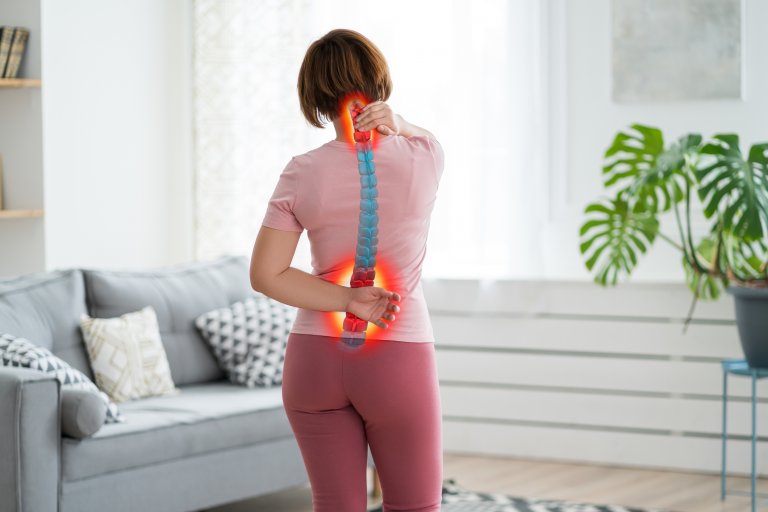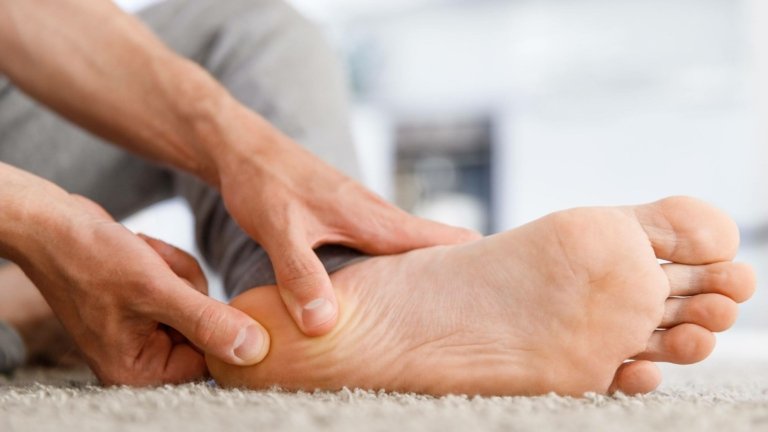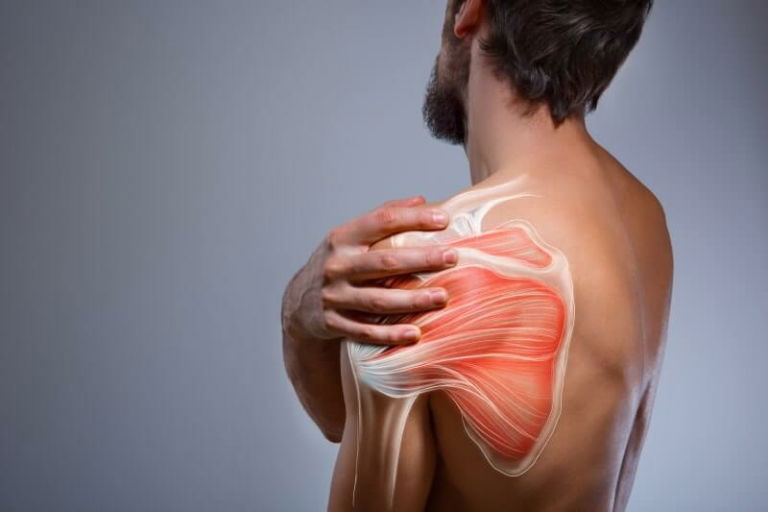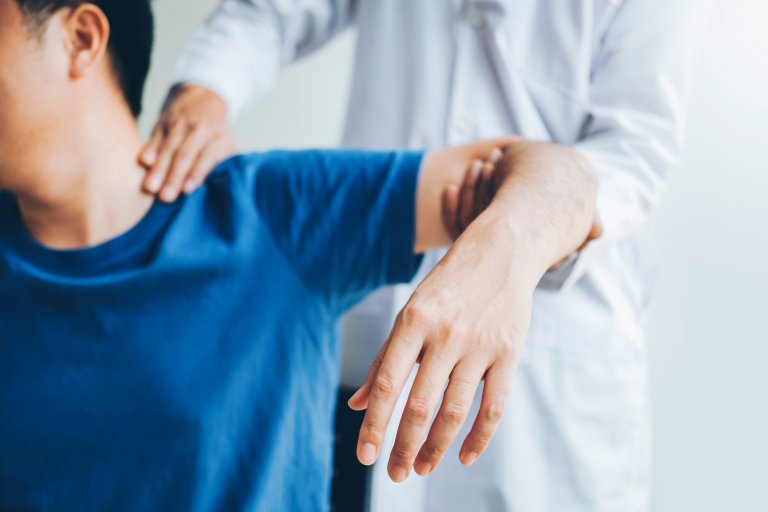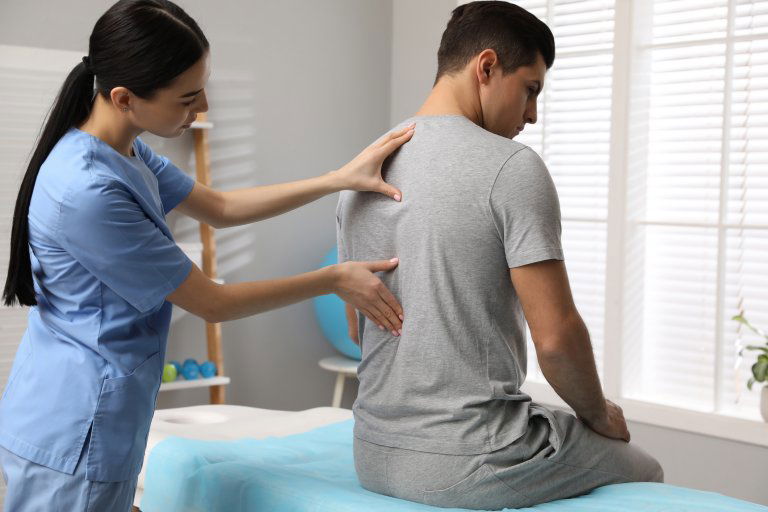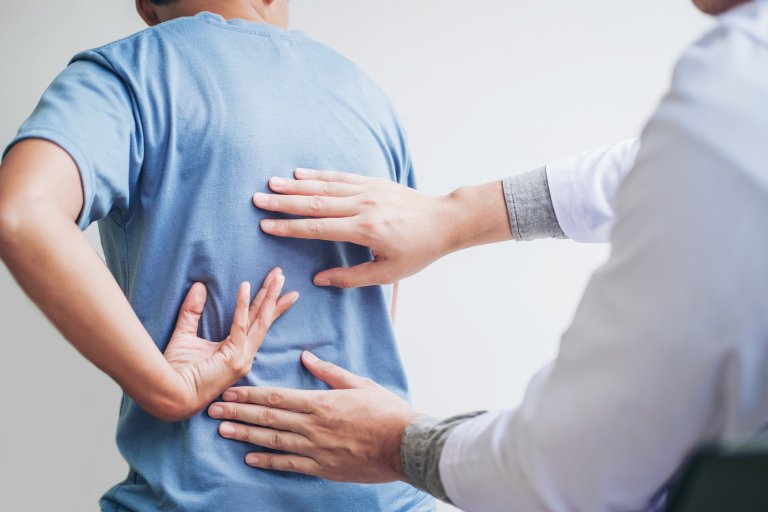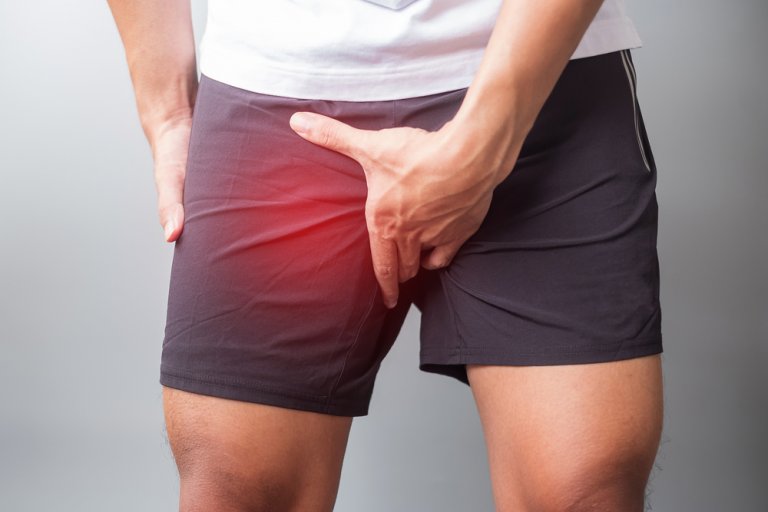Are you waiting for hernia surgery or have you already had surgery? Do you know how effective rehabilitation after hernia surgery prevents the recurrence of abdominal hernia?
An abdominal hernia occurs when a part of the intestine abnormally protrudes through a weakened abdominal wall. It most often protrudes (in as much as 75% of cases) by the inguinal canal, which is called an inguinal hernia.
Abdominal hernias can occur in the upper part of the abdominal wall (hiatal hernia), near the navel (umbilical hernia), and at the site of abdominal surgery (incisional hernia).
The first symptom of a hernia is noticed as an unusual bulge in the groin area with a sensation of pain.
Repositioning the bulge is only possible with hernia surgery, as otherwise; if left untreated, hernia symptoms such as pain, discomfort, and additional complications (intestinal obstruction) will increase.
According to medical studies, as many as 20% of patients face complications such as chronic pain, hernia recurrence, or long-term inability to work if they do not follow a proper rehabilitation programme.

When recovering from hernia surgery, patients must be careful when showering (keeping the wound dry), driving (not recommended for the first few days after surgery), exercising (being careful with the load and method of exercise), and diet.
Did you know that men are ten times more susceptible to developing a hernia than women? One in four men develops an inguinal hernia at some point in their lives.
Book an appointment for rehabilitation after hernia surgery
Below we explain how we guide the patient from hernia surgery to free, pain-free movement and prevent the recurrence of abdominal hernia.
An abdominal hernia occurs due to an abnormal abdominal protrusion through a weakened area of the abdominal muscles, causing a bulge.
Abdominal hernias most often occur in the inguinal area, as this is where the abdominal muscles are weakest.
An abdominal hernia occurs because of heavy lifting (load) and repetitive strain, such as creating excessive abdominal pressure during bowel movements and urination, and during chronic coughing.
Overweight individuals, men after prostatectomy, and patients with a family history of inguinal hernias have an increased risk of developing an abdominal hernia.
Did you know that pregnant women are more prone to developing an inguinal hernia than non-pregnant women?
Inguinal hernia is congenital, occurring in as many as 5% of children, due to abnormal development of the inguinal canal (incomplete closure).
Patients report the following symptoms of an inguinal hernia:
- a bulge is present on the left or right side of the pubic bone,
- feeling of pressure during exertion,
- increased pain with additional load, bending and straining,
- increased pain when coughing and sneezing,
- occasional spreading pain from the pelvis down the leg.
It is important to note that not all patients with an abdominal hernia have clearly expressed symptoms or that symptoms only occur occasionally.
An inguinal hernia appears as a small bulge (difficult to notice) that enlarges over time. The bulge also temporarily increases with specific activities, such as physical activity, carrying weight, and sneezing.
WHEN TO OPT FOR MEDICOFIT DIAGNOSTIC THERAPY?
- If you are waiting for hernia surgery, we recommend booking an appointment early, as rehabilitation should ideally begin within the first week after the procedure.
- You have had hernia surgery in the past and still have limited movement.
- If you want to return to sports or more intense physical activities, it is necessary to undergo diagnostic therapy.
At MEDICOFIT clinic, we provide patients with scientifically supported specialist physiotherapy, which begins with booking a diagnostic therapy appointment.
Book an appointment for rehabilitation after hernia surgery
An abdominal hernia can develop in the upper abdomen (hiatal hernia), near the navel (umbilical hernia), in the lower abdomen (inguinal hernia), or at the site of abdominal surgery (incisional hernia).
An inguinal hernia is located just above the inguinal ligament, so it is sometimes difficult to distinguish from a femoral hernia, which is located just below the inguinal ligament.
An inguinal hernia can be direct (the bulge is located in the back of the inguinal canal), indirect (the bulge is in the inguinal ring), incarcerated (the hernia gets stuck) or obstructed (blood flow stops, causing severe pain, nausea and vomiting, and the bulge turns purple).
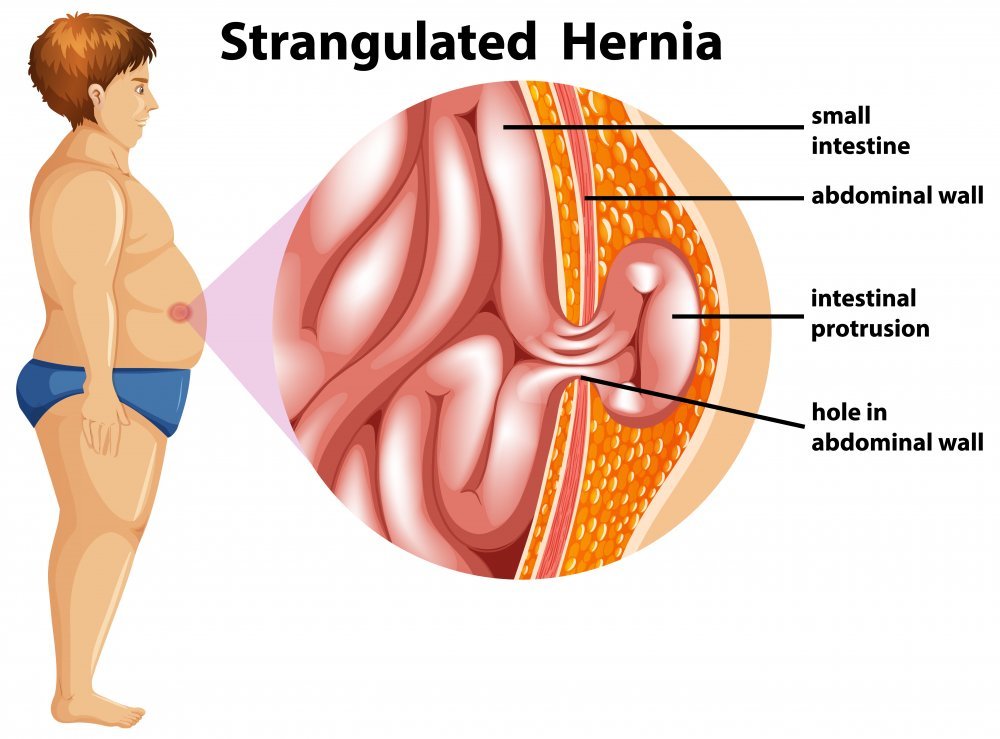
A diagnostic specialist makes a diagnosis (clinical examination and ultrasound examination) and determines the type of hernia.
Book an appointment for rehabilitation after hernia surgery
Surgery is often indicated for the treatment of inguinal hernia when symptoms are present and there is a risk of more serious complications. Hernia surgery takes about an hour.
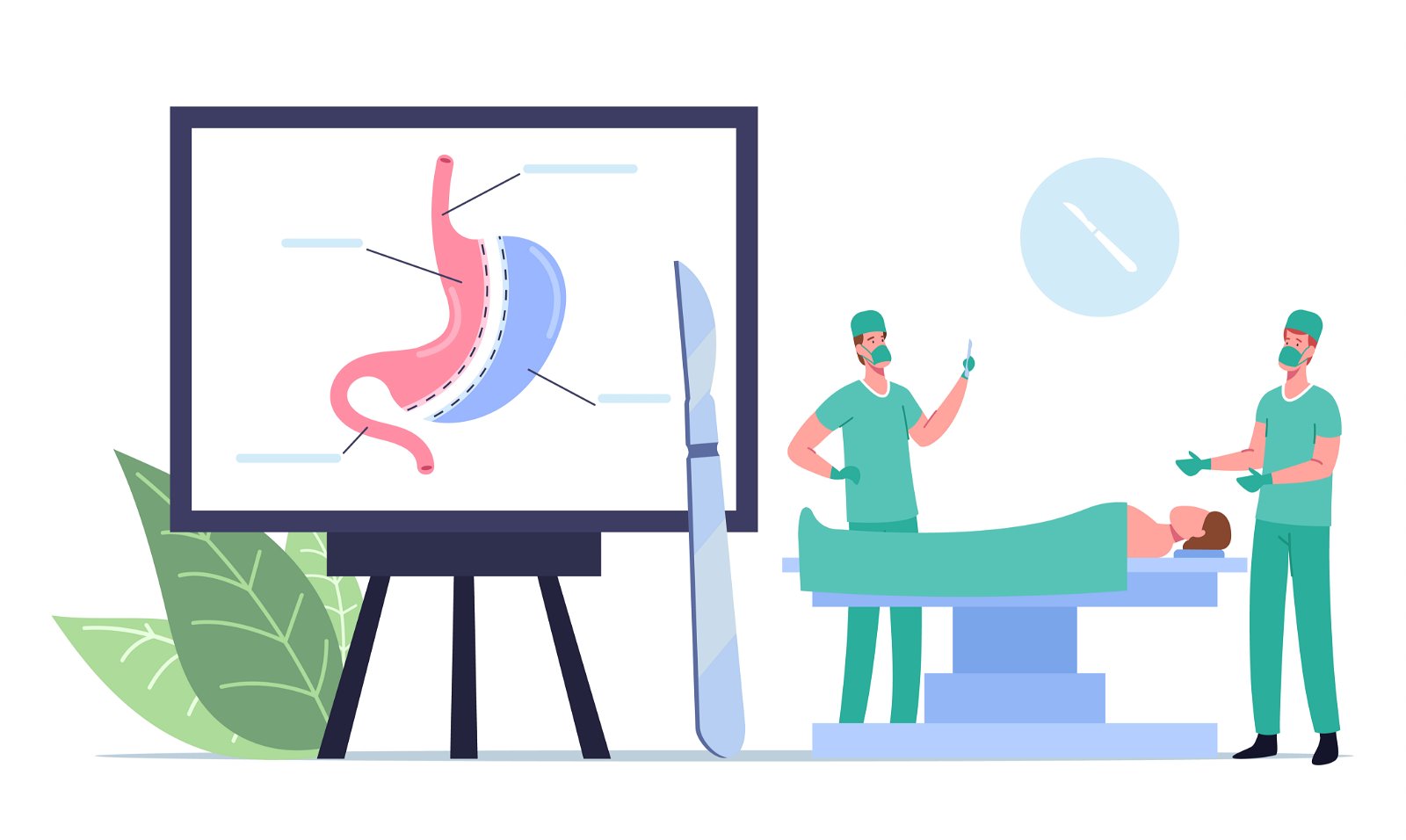
An inguinal hernia surgery is most often done as follows:
- Open hernia repair, where a small incision is made in the inguinal area and the bulge is repositioned (pushed back) into the abdominal cavity. A propylene mesh is inserted at the site of the bulge, which further strengthens the weakened area of the abdominal wall and prevents the hernia from recurring.
- Laparoscopic hernia repair, where several small incisions are made in the abdomen and the hernia is repaired using a laparoscope (a thin, flexible tube with a camera). A propylene mesh is also inserted for additional stabilisation and to prevent the hernia from recurring.
Recovery and rehabilitation after hernia surgery takes approximately six to eight weeks before a safe return to everyday and sports activities.
With proper physiotherapy treatment, we reduce the likelihood of secondary risks after surgery and hernia recurrence.
We achieve long-term, effective results of physiotherapy treatment because we perform active physiotherapy and individualised treatment.
Successful recovery after hernia surgery is carried out with the collaboration of physiotherapy and kinesiology experts, who guide you from surgery to free movement without pain!
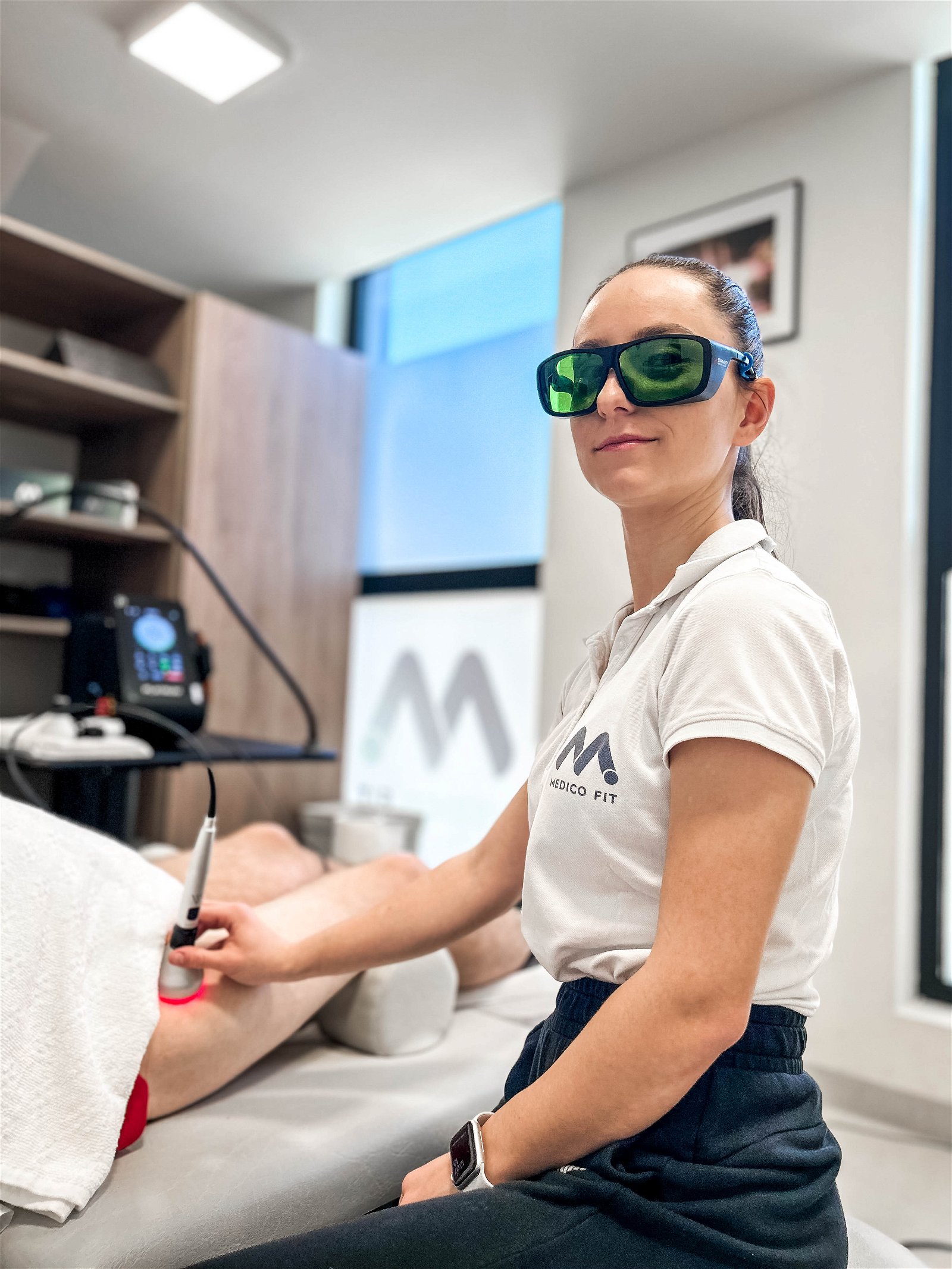
Physiotherapy phase
After hernia surgery, the abdominal wall becomes weakened and constricted, reducing the mobility and overall function of the patient. The main goal is to gain muscle strength and mobility in the body.
The greatest pain occurs immediately after surgery, which is understandable. Gradually, with physiotherapy and general physical recovery, the pain decreases.
Physiotherapy experts perform manual therapy and myofascial release to reduce tension and pain in the groin.
In combination with instrumental therapy, we primarily use the following:
- SUMMUS high-energy laser therapy, which effectively prevents the formation of keloid scars (when the scar grows and becomes larger than the size of the incision) and promotes proper scar healing.
- HiToP high-tone electrotherapy, which affects irritated pain receptors and actively reduces the feeling of pain in the groin.
An inguinal hernia bulges due to weakness of the transverse abdominal muscle.
In the acute postoperative physiotherapy phase of treatment, special therapeutic training is started, where the patient is taught the correct activation and isometric contraction of abdominal muscles (rectus abdominis, transversus abdominis, internal oblique, and external obliques).
Breathing exercises are crucial in physiotherapy rehabilitation to improve respiratory function and reduce postoperative complications (such as pneumonia). Proper respiratory function increases blood and oxygen flow and reduces pain and inflammation in the abdominal cavity.
Kinesiology phase
After successfully completing the acute physiotherapy phase, rehabilitation after hernia surgery continues into the kinesiology phase.
Progressive kinesiology training is performed to increase mobility in the hip and pelvis. This increases blood flow and reduces the likelihood of blood clots.
Strength training is done to increase muscle strength in the abdominal muscles, pelvic muscles, and groin muscles.
Pelvic floor muscle strengthening exercises (Kegel exercises) are performed to improve the strength and endurance of the muscles that support the bladder, uterus, and rectum. Pelvic floor muscle strengthening exercises actively reduces the chance of developing urinary incontinence after hernia surgery.
We gradually include the affected area into more complex motor exercises and preparations are made for a safe return to everyday activities.
If the patient is a top or recreational athlete, plyometric training is also performed, which is focused on implementing and preparing for the specific loads required by their particular sport.
Before each treatment session, special measurements are taken, called a test battery, which show your physical fitness and motor efficiency.
DANGERS AND PITFALLS OF DELAYED REHABILITATION

MEDICOFIT specialists
- Insufficient rehabilitation can cause recurrence of hernia due to muscle weakness and insufficient stabilisation of the operated area.
- Lack of proper exercises can lead to muscle atrophy around the operated area, reducing functional ability and stability.
- Delayed rehabilitation often leads to chronic pain due to the formation of adhesions and scarring at the surgical site.
Inadequate or delayed rehabilitation seriously jeopardises an individual’s long-term physical health and is the main culprit for unsuccessful results and permanent movement limitations.
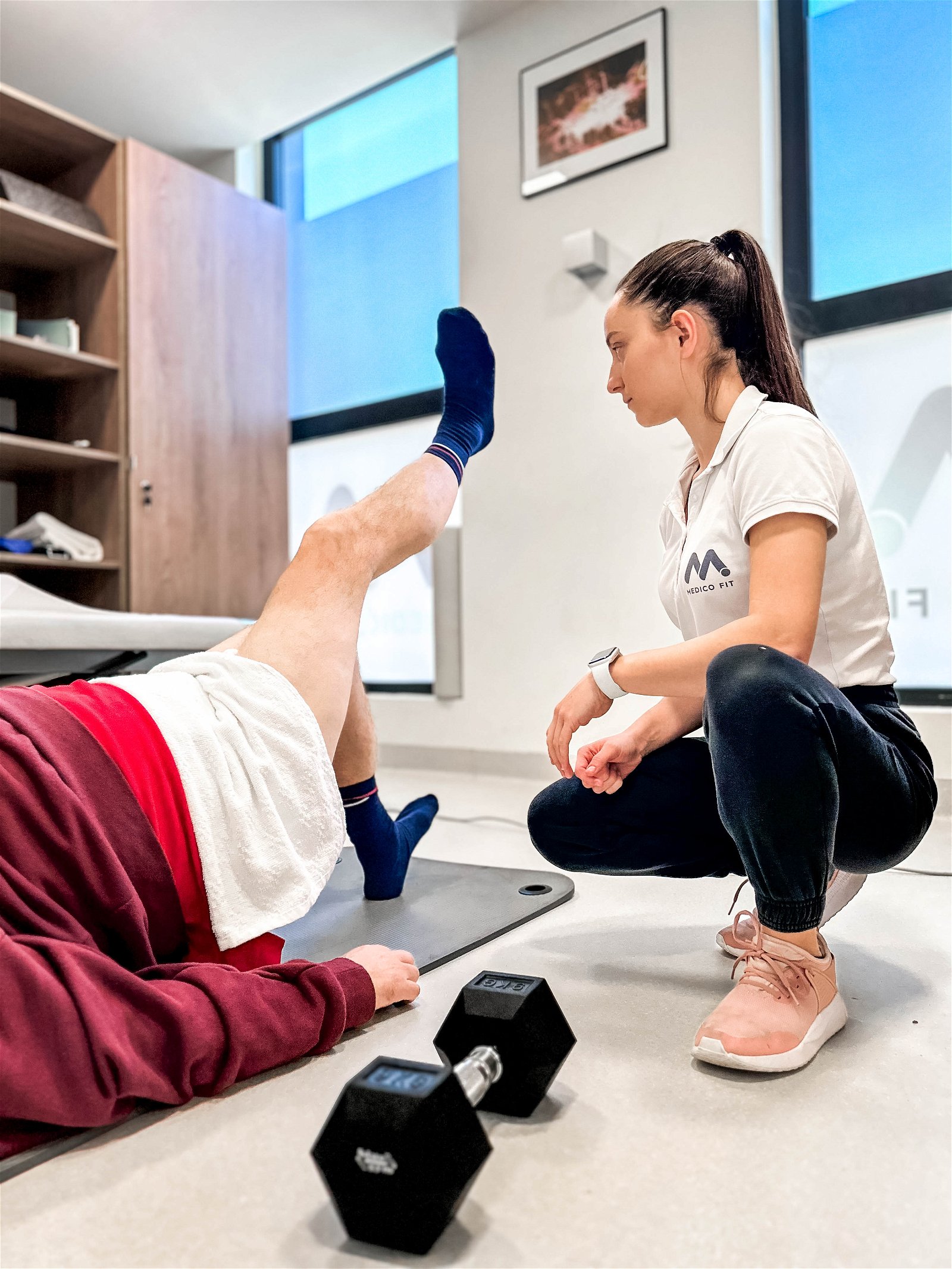
Preventive kinesiology programme
After successfully completing physiotherapy treatment, patients participate in a preventive kinesiology programme developed at MEDICOFIT physiotherapy clinic in Ljubljana.
The preventive kinesiology programme is designed to prevent the recurrence of abdominal hernia and to prepare you to more effectively manage the daily stresses placed on your body.
General strength training effectively prepares you for everyday loads and maintains your excellent physical fitness. This is the only way to ensure success of your rehabilitation after hernia surgery!
At MEDICOFIT clinic, we believe in comprehensive treatment, so we guide you from your surgery to excellent physical fitness! We restore full strength and motor function of your body!
WHY CHOOSE SPECIALIST PHYSIOTHERAPY TREATMENT?
- High treatment success and guaranteed long-term results.
- Reduced risk of recurring hernia.
- We provide state-of-the-art non-invasive treatment methods that ensure optimal conditions for complete regeneration.
Comprehensive treatment at MEDICOFIT clinic is recommended by numerous renowned surgery specialists.






